Nigeria is a land of breathtaking landscapes, diverse wildlife, and thrilling outdoor experiences, making it a paradise for adventure seekers. From beautiful waterfalls to cascading rock formations, there are lots of tourist attractions in Nigeria that offer an adrenaline-packed journey for those who crave exploration. Whether you’re scaling ancient hills, trekking through lush forests, or witnessing cultural festivals that pulse with energy, Nigeria has something for every adventurous traveler.
In this guide, we unveil the top travel destinations in Nigeria, that promise excitement, discovery, and a deep connection with nature and history. Imagine hiking up the rugged terrain of the Shere Hills, feeling the refreshing spray of Erin Ijesha Waterfalls, or navigating the wildlife-rich terrain of Yankari National Park. These are just a few of the experiences that await thrill-seekers looking to explore Nigeria beyond its cities.
Adventure tourism in Nigeria is more than just sightseeing, it’s about immersing yourself in the country’s raw beauty, challenging your limits, and experiencing nature in its purest form. Whether you’re drawn to wildlife safaris or cultural expeditions, this list of must-visit spots will inspire your next great adventure. Now, get ready to discover the top tourist attractions in Nigeria!
Natural Tourist Sites In Nigeria
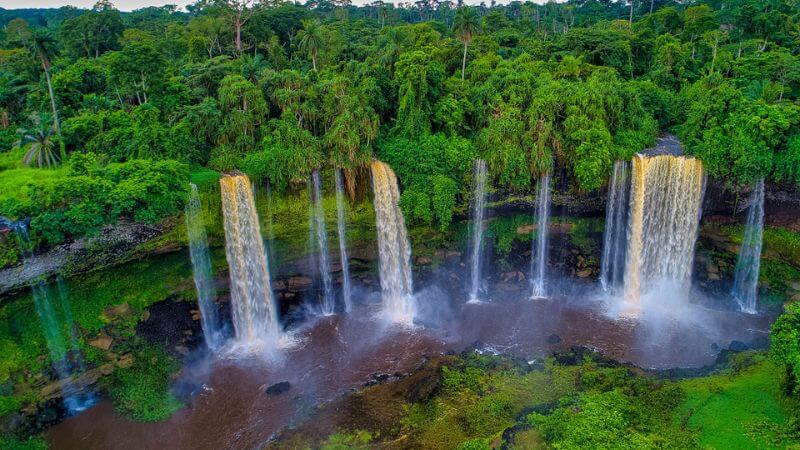
Sukur Cultural Landscape
Sukur Landscape is Nigeria’s first UNESCO World Heritage Site. This ancient cultural landscape is nestled in the Mandara Mountains, Adamawa State, and offers breathtaking views, historical architecture, and unique stone-paved walkways. The site is home to the Sukur people, whose traditional governance system and terraced farmlands have existed for centuries.
Adventure seekers can hike through the rugged hills, explore historical ruins, and immerse themselves in the rich heritage of the region. The high altitude and serene atmosphere make Sukur an ideal escape for nature lovers and those looking to experience one of Nigeria’s most remarkable cultural landscapes.
Zuma Rock
Located in Niger State, near Abuja, Zuma Rock is an iconic monolith that rises 725 meters above its surroundings. Often referred to as the “Gateway to Abuja,” this massive rock formation has a human-like face naturally carved into its surface. Historically, the Gwari people used Zuma Rock as a fortress against invading forces.
Today, it is a prime attraction for rock climbers and hikers who seek the challenge of scaling its heights. At its base, visitors can engage in picnicking, photography, and cultural storytelling from the locals who regard the rock as a symbol of spiritual significance.
Olumo Rock
Situated in Abeokuta, Ogun State, Olumo Rock is one of Nigeria’s most famous natural and historical landmarks. Standing at 137 meters, the rock served as a refuge for the Egba people during inter-tribal wars in the 19th century. Adventure seekers can climb to the top via natural tunnels, winding stairways, and modern lifts.
Along the way, they will encounter ancient caves, shrines, and the homes of traditional priests who still reside at the base. At the summit, visitors are rewarded with panoramic views of Abeokuta, making Olumo Rock a perfect destination for history buffs and nature lovers alike.
Kura Falls
Kura Falls, located 77 kilometers from Jos, Plateau State, is a hidden paradise with a spectacular waterfall cascading into a serene lake. Surrounded by lush greenery and mountainous terrain, the falls provide a perfect backdrop for adventure activities such as hiking, birdwatching, and nature photography.
The area is also home to diverse wildlife, including monkeys and exotic birds. The sound of rushing water and the cool breeze from the falls create a tranquil atmosphere, making it a must-visit location for those seeking both adventure and relaxation. Kura Falls is an excellent spot for eco-tourism and outdoor enthusiasts.
Shere Hills
Shere Hills, the highest point on the Jos Plateau, rises to an altitude of 1,829 meters above sea level. This rugged landscape is a dream for rock climbers, hikers, and adventure lovers. The hills offer multiple trails, each providing different levels of difficulty and scenic views.
Along the way, hikers will encounter caves, streams, and stunning rock formations. The site is also popular for camping, offering a chance to experience the serene environment under a starlit sky. Shere Hills is not only a physical challenge but also a gateway to experiencing the natural beauty of Plateau State.
Agbokim Waterfalls
Agbokim Waterfalls, located in Cross River State near the Cameroon border, is a stunning multi-tiered waterfall set amidst a lush tropical rainforest. The waterfall consists of seven streams that cascade down rocky cliffs, creating a breathtaking sight. The surrounding dense vegetation is home to various wildlife species, making it an excellent spot for birdwatching and nature walks.
The falls are most magnificent during the rainy season when the water volume is at its peak. Visitors can also explore the nearby Afi Mountain Wildlife Sanctuary, adding to the adventure experience. Agbokim Waterfalls is a must-visit for nature lovers and thrill-seekers.
Gurara Waterfalls
Gurara Waterfalls is one of Nigeria’s most impressive waterfalls. The waterfall is located in Niger State along the Minna-Suleja road, and Spans about 200 meters across and plunges 30 meters down with a spectacular view, especially during the rainy season. Named after two deities, Gura and Rara, the waterfall holds cultural and historical significance among the local Gwari people.
Adventure seekers can swim in the natural pools, picnic by the riverside, or explore the rocky terrains surrounding the falls. The combination of stunning scenery, cool waters, and a rich cultural backdrop makes Gurara a top destination for outdoor enthusiasts.
Erin Ijesha Waterfalls
Also known as Olumirin Waterfalls, Erin Ijesha is a seven-tiered waterfall located in Osun State. This enchanting site attracts adventure seekers due to its challenging hike, which requires climbing multiple levels to reach the highest point. The waterfall flows down a rocky hill, surrounded by lush greenery, creating a refreshing and scenic atmosphere.
Each level of the waterfall presents a unique view, with natural pools where visitors can take a dip. The cool mist from the cascading water provides a perfect escape from the tropical heat, making Erin Ijesha a favorite for hikers, photographers, and nature lovers.
Mambilla Plateau
The Mambilla Plateau, situated in Taraba State, is Nigeria’s highest plateau, rising over 1,830 meters above sea level. Known for its temperate climate and rolling green hills, the plateau offers a unique landscape that feels like a different world within Nigeria.
It is home to tea plantations, scenic waterfalls, and the famous Gashaka Gumpti National Park. Visitors can enjoy breathtaking hikes, horse riding, and wildlife spotting, including rare chimpanzees. The Mambilla Plateau is ideal for travelers looking for an off-the-beaten-path adventure with stunning views, fresh air, and an opportunity to experience rural life in Nigeria.
Idanre and Oka Hills
Idanre Hills, located in Ondo State, is a series of magnificent rock formations that rise dramatically from the surrounding plains. Climbing to the top involves ascending 682 steps, passing historical relics such as ancient settlements, shrines, and the “Unreadable Letters” inscribed in the rock. The view from the peak is breathtaking, showcasing the lush landscape below.
Oka Hills, nearby in Akoko, is another adventure hotspot known for its mystical significance among the Yoruba people. Together, these hills offer challenging hikes, cultural exploration, and a rewarding experience for anyone seeking an unforgettable adventure in Nigeria.
Obudu Cattle Ranch
Located in Cross River State’s mountainous terrain, Obudu Cattle Ranch is a breathtaking eco-tourism destination spanning 10,000 hectares. Situated approximately 1,576 meters above sea level, this tourist site offers cool temperatures and spectacular landscapes. Visitors can enjoy cable car rides, hiking trails, and stunning views of surrounding mountains.
The ranch features modern facilities, including comfortable accommodations, swimming pools, and conference centers. Wildlife enthusiasts appreciate the diverse fauna and flora, while adventure seekers can explore challenging hiking routes. The ranch’s unique climate and picturesque scenery make it a premier destination for nature lovers, photographers, and those seeking a refreshing mountain escape in Nigeria.
Oguta Lakes
Oguta Lakes represent one of Nigeria’s most significant natural water bodies. Located in Imo State, these twin lakes stretches accross 5 square kilometers, and features distinctive blue and green colors that create a mesmerizing landscape. The lakes are surrounded by lush vegetation and offer remarkable recreational opportunities.
Visitors can enjoy boat rides, fishing, and breathtaking views of the serene environment. The site holds cultural significance for local communities, with traditional legends and historical narratives associated with its formation. Photographers and nature enthusiasts find the location particularly attractive, with opportunities to capture unique water reflections and diverse aquatic ecosystems.
Ikogosi Springs
Ikogosi Springs is a geological marvel where hot and cold springs converge uniquely. Located in a serene forest environment in Ekiti State, these springs maintain different temperatures even at their meeting point. The warm spring reaches temperatures around 70°C, while the cold spring remains considerably cooler.
Surrounded by beautiful green landscapes, the site offers visitors a rare natural phenomenon to explore. Tourists can enjoy walking trails, picnic spots, and photography opportunities. The springs are not just a natural wonder but also hold cultural significance for local communities. Researchers and nature lovers find the site fascinating, representing one of Nigeria’s most interesting geological formations.
Whispering Palms Resort
Whispering Palms, located in Badagry, Lagos State, is a unique resort and tourist destination featuring extensive palm tree landscapes and beautiful natural environments. The resort offers visitors a combination of ecological beauty and recreational facilities. Tourists can enjoy walking trails through palm groves, experience local flora and fauna, and participate in various outdoor activities.
The site provides accommodation options, conference facilities, and relaxation spaces. Its name derives from the gentle sounds created by palm leaves rustling in the breeze. The location represents an important ecological and tourism site, showcasing Nigeria’s natural beauty and providing a peaceful retreat from urban environments.
Farin Ruwa Waterfalls
Farin Ruwa Waterfalls is a spectacular natural wonder cascading from significant heights. Located in Nasarawa State, the name “Farin Ruwa” translates to “White Water” in Hausa, describing the waterfall’s appearance. Surrounded by lush vegetation and rocky terrain, the falls offer breathtaking views and incredible photographic opportunities.
Visitors can explore hiking trails, enjoy picnic spots, and experience the raw beauty of Nigerian landscape. The waterfall’s consistent water flow creates a mesmerizing environment, attracting nature lovers, adventure seekers, and photographers. Local communities consider the site culturally significant, with traditional stories and legends associated with its formation.
Ado-Awaye Suspended Lake
The Ado-Awaye Suspended Lake in Oyo State is a rare geological formation, perched atop a mountain with limited access. This unique lake is one of only two suspended lakes worldwide, making it an extraordinary tourist attraction. Visitors must climb approximately 369 steps to reach the lake, offering challenging but rewarding experiences.
The lake maintains a mysterious and sacred status among local communities, with limited scientific explanations for its existence. Surrounded by rocky terrain and beautiful landscapes, the site attracts adventurers, researchers, and cultural enthusiasts. The suspended lake represents a significant natural wonder in Nigeria’s geological history.
Ogbunike Caves
Ogbunike Caves, Located in Anambra State, represent a complex underground system with significant cultural and geological importance. These caves feature multiple interconnected chambers, underground streams, and unique rock formations. Recognized as a UNESCO World Heritage Site, the caves hold deep traditional and spiritual significance for local communities.
Visitors must descend 317 steps to explore the cave system, experiencing a remarkable subterranean environment. The site attracts archaeologists, geologists, and adventure seekers interested in exploring natural formations. Guided tours provide insights into the caves’ historical and cultural contexts, making it a fascinating destination for educational and recreational purposes.
Wikki Warm Springs
Situated in Bauchi State’s Yankari National Park, Wikki Warm Springs offers a unique natural water experience. The springs maintain a constant temperature of approximately 31.1°C, providing a comfortable swimming environment throughout the year. Surrounded by lush vegetation and wildlife, the springs attract tourists, researchers, and nature enthusiasts.
The water emerges from underground sources, creating a clear and inviting pool. Visitors can enjoy swimming, relaxation, and exploring the surrounding national park. The site represents an important ecological and recreational destination, showcasing Nigeria’s diverse natural landscapes and providing a refreshing escape for travelers.
Ogbaukwu Caves and Waterfalls
Ogba Ukwu caves and Waterfalls is one of the biggest tourist attractions in Nigeria. Uniquely located in Owerre-Ezukala town, in Orumba South LGA of Anambra State, this cave is considered to be one of the largest caves in West Africa.
With unique and roomy compartments which collectively can accommodate an entire village. It takes a minimum of two hours to explore. The location is on the verge of being listed as a UNESCO World Heritage Sites in Nigeria. Other attractions include a waterfall and a massive dome in close proximity at the same location.
Owu Waterfalls
Owu Waterfalls is located between Owa Onire and Owa Kajola in the Ifelodun Local Government Area of Kwara State, Nigeria. It is the tallest waterfall in West Africa measuring 120m above sea level and cascades 330 feet down an escarpment. Surrounded by lush vegetation, and arguably one of the best tourist attractions in Nigeria, the site attracts tourists, photographers, and nature enthusiasts. Local communities associate traditional narratives with the waterfall’s formation.
Nok Village
Nok is a village in Jaba Local Government Area of Kaduna State, Nigeria. It represents a significant archaeological site showcasing ancient Nigerian cultural history. The site features remarkable terracotta sculptures dating back to 500 BCE, providing insights into early African artistic and cultural practices.
Archaeologists consider Nok culture a critical civilization, demonstrating advanced artistic and technological capabilities. The site offers visitors an opportunity to explore ancient Nigerian cultural developments. Researchers continue studying Nok artifacts to understand prehistoric African societies. The village represents an essential historical and cultural landmark, preserving important archaeological evidence of early Nigerian civilizations.
Birnin Kudu Rock Paintings
Located in Jigawa State, Birnin Kudu Rock Paintings represent significant archaeological evidence of prehistoric human activities. The site features extensive rock art depicting human figures, animals, and complex geometric patterns.
Archaeologists estimate these paintings date back several thousand years, providing insights into early human societies. The rock paintings showcase artistic practices, cultural representations, and potential spiritual narratives.
Researchers continue studying these artifacts to understand prehistoric cultural developments. The site attracts archaeologists, researchers, and cultural enthusiasts interested in understanding early human civilizations in Nigeria.
Park And Game Reserves In Nigeria
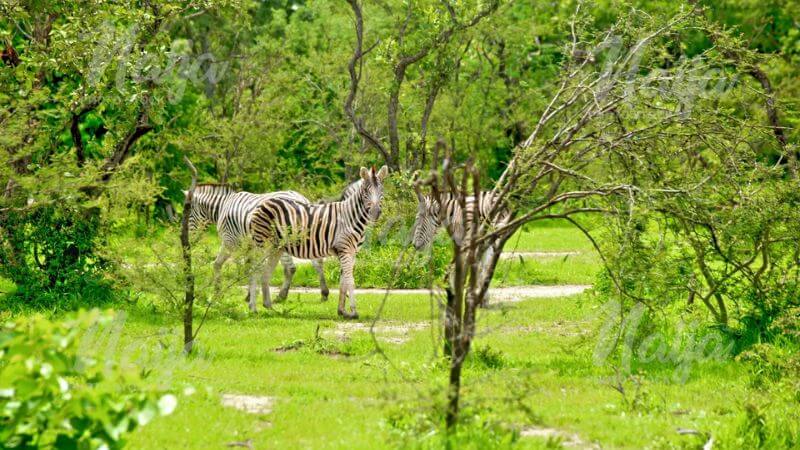
Yankari National Park
Yankari National Park is Nigeria’s most popular wildlife conservation area, spanning approximately 2,244 square kilometers. Located in Bauchi State, the park hosts a significant population of African elephants, buffalo, and various antelope species. Visitors can explore diverse ecosystems, including savanna woodlands and gallery forests. The park features the famous Wikki Warm Springs, offering natural swimming opportunities.
Wildlife enthusiasts can enjoy game drives, observing numerous animal species in their natural habitat. Archaeological sites within the park provide insights into human settlements. Established in 1956, Yankari represents a critical conservation effort, protecting Nigeria’s rich biodiversity and providing educational and recreational experiences for tourists and researchers.
Kuyamba Game Reserve
Kuyamba Game Reserve is located inn Taraba State, and offers a pristine wilderness experience in northeastern Nigeria. The reserve protects diverse ecological zones, featuring woodland savannas and significant wildlife populations.
Visitors can explore varied landscapes hosting multiple animal species, including antelopes, primates, and various bird species. The reserve plays a crucial role in wildlife conservation, maintaining ecological balance and protecting endangered species. Researchers and nature enthusiasts find the area valuable for studying wildlife behaviors and ecosystem dynamics.
Limited human intervention ensures a natural environment, making Kuyamba an important biodiversity conservation site. The reserve provides opportunities for ecological research and sustainable wildlife management.
Gashaka Gumpti National Park
Spanning Taraba and Adamawa States, Gashaka Gumpti National Park is Nigeria’s largest national park, covering approximately 6,402 square kilometers. The park features diverse landscapes, including montane forests, grasslands, and rugged terrain. Home to significant wildlife populations, including chimpanzees, elephants, and various antelope species, the park represents a critical conservation area.
Visitors can explore challenging hiking trails, observe diverse fauna, and experience complex ecosystems. The park’s varied elevation and terrain create unique microclimates supporting rich biodiversity. Researchers and wildlife enthusiasts appreciate the park’s ecological complexity and conservation importance, making it a significant destination for environmental studies.
Afi Mountain Wildlife Sanctuary
The Afi Mountain Wildlife Sanctuary protects critical primate habitats and unique mountain ecosystems. The sanctuary, located in Cross River State, hosts significant populations of endangered species, including drill monkeys and chimpanzees. Situated in southern Nigeria’s mountainous regions, the area provides essential conservation environments.
Researchers study complex primate behaviors and forest ecosystems, highlighting the sanctuary’s global ecological significance. Visitors can explore challenging mountain trails, potentially observing rare wildlife in their natural habitat. The sanctuary plays a crucial role in preserving Nigeria’s biodiversity, protecting endangered species and maintaining complex ecological systems.
Okomu National Park
Okomu National Park, in Edo State, preserves critical lowland rainforest ecosystems in southern Nigeria. The park covers approximately 200 square kilometers, and home to endangered species like forest elephants, white-throated monkeys, and numerous bird species – the park represents a crucial conservation area.
Visitors can explore dense forest environments, experiencing unique ecological systems. The park provides essential habitat for wildlife and supports ongoing conservation research. Established to protect rapidly diminishing rainforest ecosystems, Okomu National Park plays a significant role in preserving Nigeria’s natural heritage and supporting biodiversity conservation efforts.
Kainji Lake National Park
Spanning Niger and Kwara States, Kainji Lake National Park combines aquatic and terrestrial ecosystems around the artificial Kainji Lake. The park covers approximately 5,340 square kilometers, featuring diverse wildlife populations in savanna and woodland environments. Visitors can enjoy boat trips, observe wildlife, and explore varied landscapes.
The park hosts numerous animal species, including various antelope, primates, and bird populations. Established alongside the Kainji Dam’s construction, the park represents an innovative approach to conservation and resource management.
Kamuku National Park
Located in Kaduna State, Kamuku National Park protects significant savanna and woodland ecosystems in northwestern Nigeria. The park covers approximately 1,121 square kilometers, hosting diverse wildlife populations adapted to semi-arid environments. Visitors can explore expansive landscapes, observing animals like antelopes, baboons, and various bird species.
Cultural & Historical Attractions In Nigeria
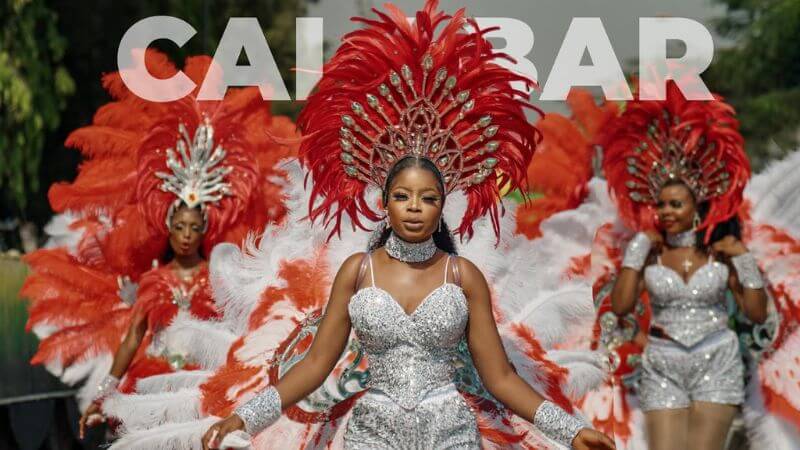
Durbar Festival
A spectacular Islamic cultural celebration primarily observed in northern Nigeria – particularly in Kano, Kaduna, Sokoto, Etc. The Durbar festival showcases traditional horseback riding, elaborate costumes, and military-style parades. Held during Eid al-Fitr and Eid al-Adha, the festival displays royal heritage and equestrian skills.
Participants, including emirs and local nobility, dress in traditional attire and parade through city streets on beautifully decorated horses. The event represents a significant cultural display of historical royal traditions, attracting thousands of spectators. Musicians, drummers, and performers accompany the parade, creating a vibrant atmosphere that celebrates Islamic and northern Nigerian cultural identity.
Eyo Festival
Originating in Lagos, the Eyo Festival is a unique Yoruba cultural celebration representing the city’s traditional heritage staged to mark the transition of an important indigene to the great beyond. Participants dress in distinctive white flowing costumes and distinctive hats, symbolizing ancestral spirits.
The masquerade parade moves through Lagos Island, featuring synchronized movements and traditional music. Considered one of Nigeria’s most iconic cultural events, the Eyo Festival typically marks important community events or royal ceremonies.
Performers represent different traditional groups, each with specific roles and significance. The festival showcases Yoruba cultural complexity, preserving historical traditions and community connections through elaborate public performances.
Osun Festival
Held in Osogbo, Osun State, the Osun-Osogbo Festival celebrates the river goddess Osun (goddess of fertility) , a significant deity in Yoruba traditional religion. The annual festival attracts thousands of participants from across Nigeria and international visitors.
Held in August, the event features traditional rituals, sacrifices, and a sacred procession to the Osun Grove, a UNESCO World Heritage Site. Participants wear traditional attire, perform sacred dances, and make offerings to the river goddess. The festival represents a critical cultural preservation effort, maintaining spiritual connections and showcasing Yoruba traditional religious practices.
Argungu Fishing Festival
Taking place in Kebbi State, the Argungu Fishing Festival is a unique cultural event celebrating fishing traditions. Held annually, the festival involves thousands of fishermen competing to catch the largest fish in the Kebbi River. Participants use traditional fishing methods, including bare-hands, large nets, and boats.
The event attracts visitors from across Nigeria and international tourists. Beyond the fishing competition, the festival includes cultural performances, traditional music, and local arts exhibitions. The Argungu Fishing Festival represents a significant cultural tradition, highlighting the importance of fishing in local communities and preserving traditional fishing techniques.
New Yam Festival
Celebrated across various Nigerian ethnic groups, particularly in the southeastern regions, the New Yam Festival marks the harvest of new yams. The festival involves elaborate ceremonies, traditional music, dance performances, and feasting. Communities gather to thank agricultural deities, celebrate agricultural achievements, and share harvested crops.
Participants wear traditional attire, perform cultural dances, and prepare special yam-based dishes. The festival represents an important agricultural and cultural tradition, connecting communities through shared agricultural experiences and maintaining cultural heritage. It symbolizes community unity, gratitude, and the significance of agriculture in Nigerian society.
Ige-Agba Festival
Igede Agba (New Yam Festival) is a yearly cultural occasion that is celebrated among the Igede people of Benue State, at home and in diaspora. It is a cyclic festival that comes up every first Ihigile market day in the month of September. According to the Igede calendar, September is her seventh moon “Oya”, a very special number at that.
The activities at Igede Agba include eating of pounded yam, cultural music, dancing and other forms of cultural displays. The occasion also witnesses the drinking of locally brewed drinks from millet and guinea corn called Apio, Ogbete, Oburukutu, Ogene and others with different alcoholic content.
Mmanwu Festival
The Mmanwu Festival is a traditional masquerade event showcasing cultural heritage of the Igbo people of Southeastern Nigeria. Participants wear elaborate masks and costumes representing spiritual entities and ancestral spirits.
The festival involves complex performances, traditional music, and ritualistic dance movements. Each masquerade represents specific community narratives and spiritual meanings. The event attracts local and international cultural enthusiasts interested in traditional African performance arts.
Ovia-Osese Festival
Ovia Osese is a festival organized for the initiation of young girls or maidens into womanhood which symbolizes chastity, virginity and purity in conformity with the laws and social norms of Ogori people. Held in Ogori land of Kogi State, the festival is a mandatory marital rite for virgins in Ogori land.
The Ovia Osese festival has been in existence since the beginning of time for the people of Ogori land. However, with modernization and the advent of Christianity, certain aspects of the festival have been changed or replaced but the underlining emphasis has always been on Chastity.
Olojo/Ibogun Festival
The Olojo Festival, primarily celebrated in Ile-Ife, Osun State, is a significant Yoruba cultural event honoring traditional origins and spiritual heritage. The festival which is celebrated anually every October lasts for four days involves complex rituals, traditional performances, and spiritual ceremonies led by local traditional leaders at Oke-Mogun in Ile ife.
Participants wear traditional attire and participate in sacred processions. The event celebrates Yoruba mythological narratives and community connections to ancestral traditions.
Igogo Festival
The Igogo festival is a Yoruba festival held in Owo, Ondo State, Nigeria. It is held annually in September to honor Queen Oronsen, a mythical wife of Rerengejen. During this Yoruba celebration, the reigning Olowo of Owo and high chiefs pay homage by dressing in women’s attire – adorned with coral beads, beaded gowns, and plaited hair. Uniquely, the festival forbids headwear, drumming, and gunfire.
Calabar Cultural Carnival
The Calabar Carnival is a yearly cultural festival in Cross River State, Nigeria. It’s known as Africa’s Biggest Street Party and is a popular destination for tourists. The carnival which is help every December was created to promote Cross River State as a global tourist destination, showcase Africa’s cultural heritage, and to celebrate Christmas. The Carnival attracts tourists from major Nigerian cities and other parts of the world, and features music and dance, cultural displays, and competitions.
Boat Regatta
The Nigerian Boat Regatta is a traditional maritime festival celebrated primarily in coastal communities, especially in the Niger Delta(Rivers State, Akwa Ibom State, Bayelsa State, and Cross River State) and southwestern regions (Lagos State). The event features elaborate boat competitions showcasing local maritime skills and cultural heritage.
This festival holds great importance for the local communities and serves as a time to honor their cultural heritage, connect with their ancestors, and foster a sense of unity among the people, and participants decorate their boats with vibrant colors and compete in races that demonstrate navigational expertise.
Historical Royal Palaces In Nigeria
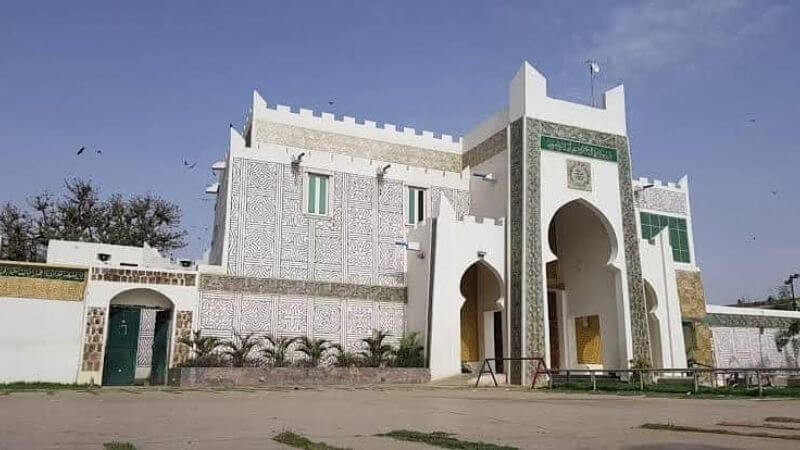
Alafin of Oyo’s Palace
Located in Oyo town, this historical palace represents the administrative center of the ancient Oyo Empire, one of West Africa’s most powerful pre-colonial kingdoms. The palace complex showcases traditional Yoruba architectural designs, featuring intricate wooden carvings, symbolic gates, and historical courtyards. Home to the Alafin, a paramount traditional ruler, the palace preserves centuries of cultural and political history.
The palace of the is one of the largest Yoruba royal residences, and has the largest number of Kobis (corridors). This complex corridor system allows the Alaafin to move in without exiting to the outside. Within the complex, there are shrines of Sango, Obatala, Ogun and Imole.
Oba of Lagos’ Palace
Iga Idunganran, known as the Oba of Lagos’ Palace, is a historic landmark situated on Lagos Island. Dating back to the 15th century, it has served as the official residence of Lagos’ monarchs. The palace showcases a blend of traditional Yoruba architectural styles, reflecting its rich history.
Visitors can explore its ornate courtyards, ancient shrines, and view artifacts that narrate the city’s past. As a cultural hub, the palace offers insights into Lagos’ royal heritage and traditions. To visit, it’s advisable to seek permission from the palace officials in advance.
Emir of Kano’s Palace
Constructed in the 15th century, the Emir’s palace in Kano is the longest continued seat of power for a ruling authority in Sub-Saharan Africa. In the Hausa language, the palace is known as Gidan Rumfa after the Sultan Muhammad Rumfa, under whom the palace was constructed, or Gidan Sarki, which translates as “Emir’s house.” The campus now spans 33 acres; It is a centerpiece of Kano city and is considered one of the best-preserved examples of traditional Hausa architecture in Nigeria.
Visitors are best served when aligning their trips to Gidan Rumfa with Kano’s famed Durbar festival, a four-day celebration held after Eid al-Fitr at the close of Ramadan and Eid al-Adha, at the end of the annual Hajj pilgrimage.
Oba of Benin’s Palace
The Royal Palace of the Oba of Benin, located in the heart of the ancient City of Benin Kingdom, Nigeria, is a UNESCO World Heritage Site that epitomizes the rich cultural heritage of the Benin Kingdom. Originally constructed by Oba Ewedo between 1255 and 1280 AD, the palace was reconstructed by Oba Eweka II in the early 20th century after its destruction in 1897.
Visitors can admire the palace’s traditional architecture, intricate bronze sculptures, and ivory artifacts that narrate centuries of royal history. The palace remains a vibrant center of Benin culture, offering insights into the kingdom’s enduring traditions and artistic excellence.
Emir of Zaria’s Palace
The Emir of Zazzau’s Palace in Zaria, Kaduna State, is a historic and culturally significant royal residence deeply rooted in the heritage of Northern Nigeria. Established in the 15th century, the palace is an architectural masterpiece that blends traditional Hausa design with Islamic influences.
Visitors can explore the palace grounds, which include the emir’s throne room, where official ceremonies are held, and the Juma’at Mosque, an integral part of the palace complex. The palace offers insights into the rich traditions and governance of the Zazzau Emirate. Guided tours are recommended to fully appreciate the site’s historical significance.
Ooni of Ife’s Palace
The Ooni of Ife’s Palace, also known as Ile Oodua, is a significant cultural landmark in Ile-Ife, Osun State, Nigeria. Serving as the official residence of the Ooni, the traditional ruler of Ife, the palace exemplifies traditional Yoruba architecture and artistry. It can be rated as one of the most beautiful palaces in Nigeria.
The palace has three courts, the Emese Court, the Council of Elders Court and the Supreme Court. The Emese Court is handled by the Emese who are a version of the British Royal Guards. They are in charge of simple matters , The council of elders handle some bigger issue while the Supreme Court is headed by the King.
Obi of Onitsha’s Palace
The Obi of Onitsha’s Palace, known as Ime Obi, is a significant cultural landmark in Onitsha, Anambra State, Nigeria. Serving as the official residence of the Obi – the traditional ruler of Onitsha, the palace exemplifies traditional Igbo architecture and artistry.
The Palace dates back to the 16th century when it was founded alongside the Onitsha Kingdomby migrants from the ancient Kingdom of Benin, led by Eze Chima. Established as the central seat of power, the palace quickly became the heart of political, cultural, and spiritual life.
National Museums In Nigeria
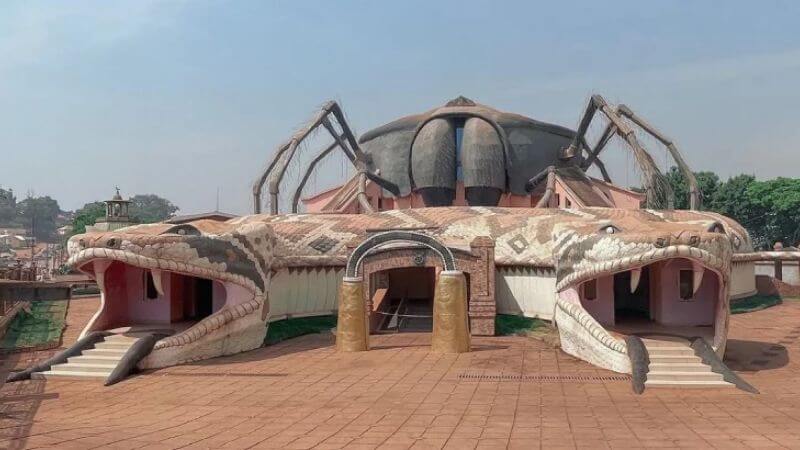
National Museum, Oron
Oron Museum in Oron, Nigeria, is a significant cultural institution established in 1958. Located near Calabar, the Oron Museum is notable for its cherished national monuments, including the Ojukwu Bunker, one of the remaining relics of the Nigerian Civil War. The museum boasts an impressive collection of items that reflect the community’s cultural heritage, from carved wooden figurines (Ekpu) and pottery (Ishibori) to traditional mats and musical instruments.
National Museum Benin City
The Benin City National Museum, is an institution rich in history and cultural significance. This prestigious museum was established in 1973 and since then, it has served as a custodian of Nigeria’s rich and diverse cultural heritage. Inside, you’ll encounter an array of artifacts from the illustrious Benin Empire. Immerse yourself in the intricacy of the terracotta and bronze figures, or marvel at the artistry of the cast iron pieces that are steeped in ancient traditions.
National Museum Kaduna
Located along Ali Akilu Road in Ungawan Sarki, Kaduna. The museum was inaugurated in 1975, following the donation of the old Northern People’s Congress (NPC) building by the North Central State Government. It is rich with a collection of diverse antiquities, artifacts, and relics of Nigerian cultural heritage. This is the home of the over 2500-year-old Nok Terracotta collections.
National Museum and Monument Lagos
It contains some of the country’s rare collections of works of arts and crafts, and historic monuments. It is a good place to visit for further discovery about the hardworking people of Lagos and Nigeria.
Museum of Traditional Nigerian Architecture (MOTNA)
The need to preserve the nation’s architectural heritage led to the establishment of the Museum of Traditional Architecture (MOTNA). Within the museum are life-size replicas of various traditional buildings across the country. Studies, observations, and documentaries reveal how the longevity and functionality of indigenous Nigerian buildings have been altered by weather elements such as precipitation and relative humidity.
Ife Museum Ile-Ife
For over 15 years between 1972 and 1988 the Ile Ife Museum was a mecca for African and African American art, housing a world class collection of West African materials as well as the work of local artists. It houses various objects of antiquity which abound in Ile-Ife from time immemorial. Among important collections in the museum are the granite tools, cubicles fused for making beads, brass of Ooni of Ife, terracotta artworks, etc.
Final Thoughts On the Top Tourist Attractions In Nigeria
Nigeria’s tourist attractions represent more than just geographical locations; they are living narratives of natural beauty, cultural richness, and adventurous spirit. From the wildlife sanctuaries of Cross River to the historical palaces of ancient kingdoms, tourist attractions in Nigeria offer travelers a transformative journey that challenges perceptions and creates profound connections.
For adventure seekers, these destinations are not merely places to visit but experiences to be lived. They represent opportunities to push personal boundaries, understand diverse cultures, and witness the extraordinary biodiversity that makes Nigeria a unique global destination. Each attraction tells a story – of nature’s resilience, human creativity, and the endless possibilities of exploration.
As you plan your next adventure, remember to explore our Get Help Page to access instant assistance for your stay in Nigeria.

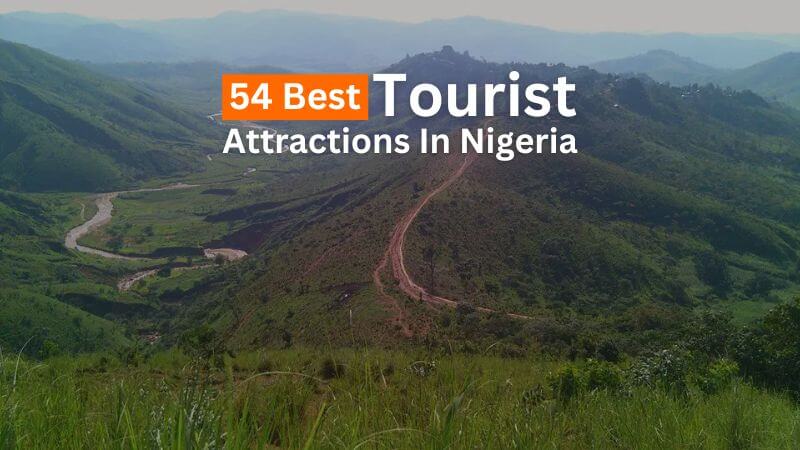
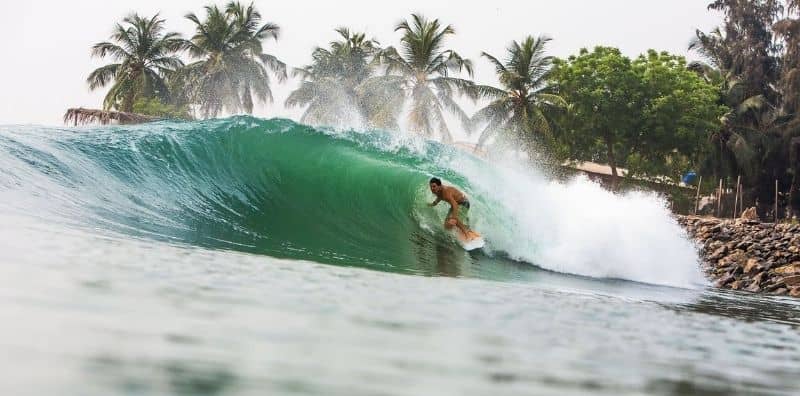
![How to Apply For International Passport In Nigeria [All By Yourself] 9 How to apply for international passport in Nigeria](https://www.livinginnigeria.com/wp-content/uploads/2022/08/How-to-apply-for-international-passport-in-Nigeria.jpg)